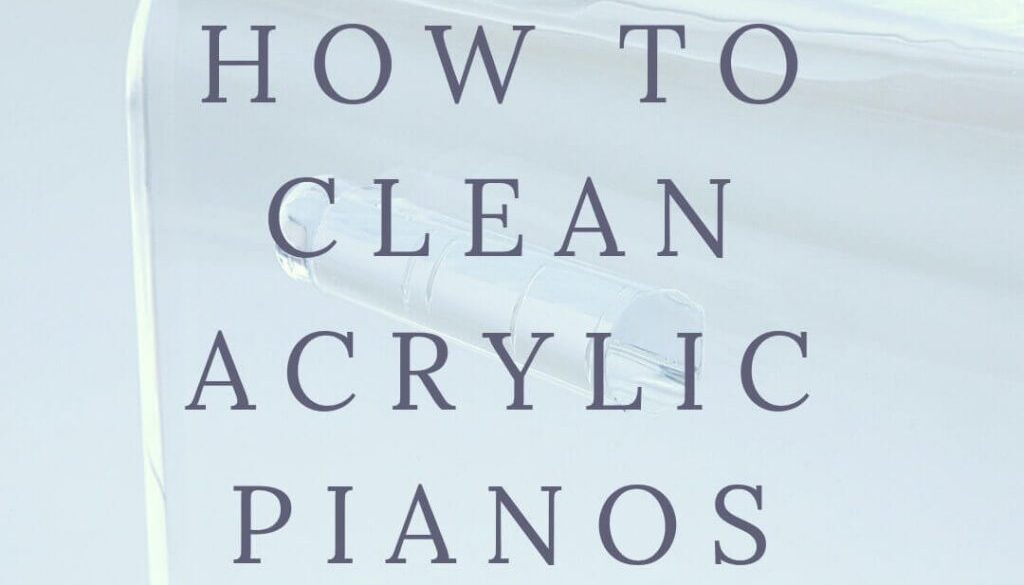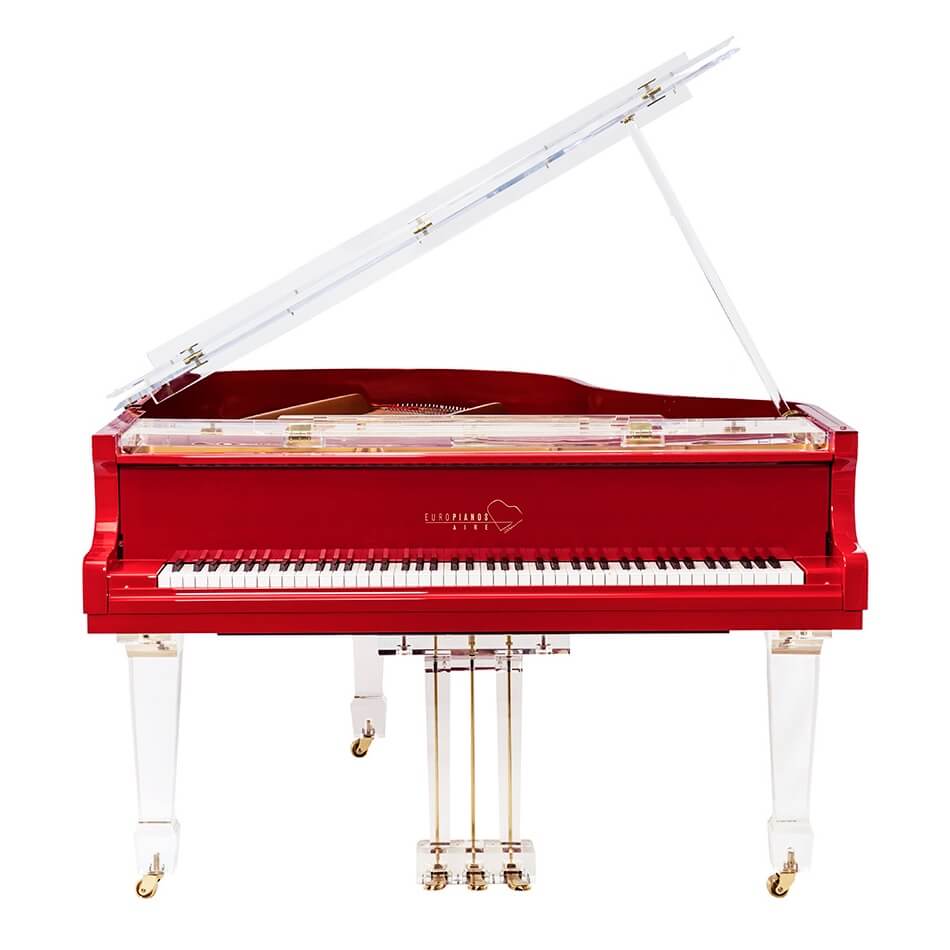How To Clean Acrylic Pianos

Since the renaissance in the piano industry of designer pianos, more and more modern homes are showcasing beautiful acrylic pianos (sometimes called “glass pianos,” “transparent pianos” or “crystal pianos”). All pianos require “under the lid” maintenance (regular tuning for tone, touch and pitch) but one might wonder what kind of cleaning care is used on the outside case of an acrylic piano?
The Plexiglas or acrylic cases of these pianos are beautifully crystal clear, no matter what shape or thickness the acrylic takes. Dirt can barely adhere to it, and the surface, unlike wood, repels water. For fingerprints and smudges, or any small spills, a premium micro-fiber cloth with mild soapy water is all you’ll need.
- Do NOT use ammonia-based or chemical cleaners like Windex as they can cloud the acrylic!
- Do NOT use paper towels or rough cloths, which can scratch.
- Do NOT rub into the acrylic, or apply undue pressure, but merely blot the surface with a wet, lint free anti-static cloth.
The dry cloth can be used to buff and polish the acrylic surface which will reduce future stains.
What To Do When The Acrylic Has Scratches?
House and Garden gives cleaning advice.
Normal small wear and tear scratches that might occur on acrylic can be cured with special cleansers or acrylic polishes. Euro Pianos Naples sends a kit of Novus products along with each of our acrylic piano sales. Novus offers a Youtube video of how they are used. The kit includes a cloth, an acrylic cleanser, a repair polish for small scratches and a repair polish for deeper scratches. This is an excellent way for our clients to maintain the luster of their acrylic piano without having to pay for costly repairs.
Obviously if the acrylic is badly damaged, it would need professional assessment. A deep scratch, gouge or chip cannot simply filled, stained and buffed like wood. More often than not the acrylic piece will need replacement. Euro Pianos Naples however works with top level artisans in Miami who have had success in repairing just such damage.
Why Does Some Acrylic Yellow With Age?
Some acrylic is prone to yellowing. What was once crystal clear fades to a brownish yellow color and the piano loses its transparency. There is no way to stop yellowing. Either your acrylic will or it won’t. The only way to 100% safeguard your piano against yellowing is to insist on quality acrylic made in Germany or the USA. Yes, there is a significant price difference, but the old adage holds true – you get what you pay for.
The Bottom Line On Owning An Acrylic Piano
Acrylic pianos are easy to clean. It takes just the quick swipe of a cloth to keep your piano looking like new. Acrylic pianos are timeless and suitable for every décor. Unlike traditional piano cases, acrylic pianos don’t “crowd” a room, adding instead an airy lightness and elegance.
The fact that acrylic pianos fall into the line of luxury items means that the components under the lid are likely to be a higher quality and more stable than poorly made instruments, so the pitch holds longer and requires less upkeep. Acrylic pianos are quite simply stunningly beautiful objets d’art in addition to being fully functional pianos. We believe that makes acrylic pianos the wunderkind of today’s piano world


